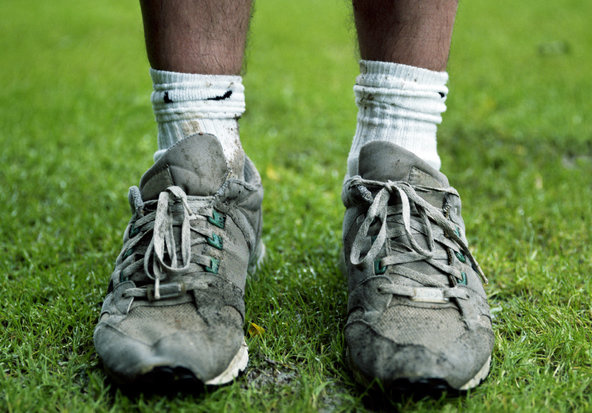How long should my shoes last?
- Posted on
- By Jake Smith
- 0

As a run-specialty retailer, we’re here to chat and answer your running-related questions. We’ve worked with thousands of customers of all ability levels, so believe me, we’ve heard it all. Easily the most common question we get is “How long will my shoes last?” You’ve likely heard the rule-of-thumb which says shoes will last somewhere between 500 and 800 kms, but the truth is that it varies for everybody. There are so many factors that contribute to the longevity of a shoe. I’ve seen people burn through a pair in just a few hundred kilometers and some that are able to get a couple thousand before they need to be replaced. In no particular order, some of the factors that play a role in your shoe’s lifespan are: your gait, the surfaces you’re running on, the activities you’re using them for, your weight, temperature of the day, how often you’re using them, alignment of the planets… okay, maybe not that last one, but you get the idea. By going into detail about a couple of these factors, we’re hoping you’ll have a better understanding of why your shoes are lasting as long as they are, or maybe not as long as you think they should be.
A person’s gait, or biomechanics with regards to a shoe’s lifespan can be boiled down to how their foot hits the ground during their stride. A person who pronates (or collapses inwards) while running will tend to wear down the inside edge of a shoe before the rest of it. A person who lands heavily on their heel will break down the cushioning of a shoe much quicker than if they were landing more gently or towards their midfoot. If you’re not sure how your foot strikes, you can come see us for a quick and free gait assessment. One of the great benefits of being an independent run-specialty shop is that we can team up with other local businesses; something that we are proud to do with our friends at Defy Sports Performance & Physiotherapy. All of our staff have been trained by some of their qualified staff to perform a quick gait analysis so we can better equip you with the proper running shoe.
The surfaces you’re running on and your weight are pretty closely related. More directly they relate by how much force is going through your shoes, only the direction the force is traveling will differ. Harder surfaces like concrete and pavement means more force is going up into your shoe; similarly, a heavier person will be putting more force down onto the shoes cushioning. Softer surfaces like gravel or dirt paths will absorb some of that impact as well and reduce the load on the shoes. A high cushioned shoe would be a good option for someone who likes to run exclusively on the roads.
In a perfect world, you’d have a different pair of shoes for every activity you participate in. With the technology being pumped into the footwear industry, every type of shoe is designed for a specific set of motions. Running shoes are meant for that very repetitive and linear heel-to-toe motion and should help you through that movement as efficiently as possible; basketball shoes are designed to give you great support for side-to-side movements and provide excellent traction for hardwood floors. Using a shoe for something outside of its designated purpose will cause it to wear through a lot quicker than an appropriate shoe.
A lesser known fact about running shoes is that just like you, they need time to recover between runs. It is suggested that alternating use of two new pairs of shoes will equal the durability lifespan of wearing three pairs of new shoes that are worn consecutively every day. This is because of the lightweight foam materials that shoe manufacturers are using in their midsoles. These foams get compressed with every step and need time to decompress after your run. On average foams are said to need approximately 48 hours to fully decompress (and that’s when they’re brand new); that’s why if you’re using them more frequently than that, your shoes won’t last as long. Now obviously it’ll cost more money upfront to buy two pairs of shoes, but it will save you dollars in the long run (pun intended) if you don’t have to replace them as frequently.
Now that you know some of the factors contributing to a shoe’s longevity you should have a better idea of when you should be replacing your shoes. You can put up to 7 times your body weight into each step when you’re running so it stands to reason that having a shoe capable of providing the support and cushioning you need will go miles in helping you stay healthy and injury free.
If you don’t already, start keeping track of the mileage on your shoes. There are several good ways to go about it, if you use Strava to track your runs, you can plug in the model of shoe into your gear profile and it will automatically update the mileage after each run. I’ve seen others write the date of purchase on the mid-sole of their shoes with a Sharpie, a little less accurate but if you’re consistent with your weekly mileage you’ll start to have an idea of how long your shoes will last. Many runners that have been at it for years will tell you that their body lets them know when their shoes are dead. It varies with everybody but some part of their body will act up, for me, it’s always my left Achilles. When it starts to flare up, I know it’s time to replace my shoes.

Comments
Be the first to comment...